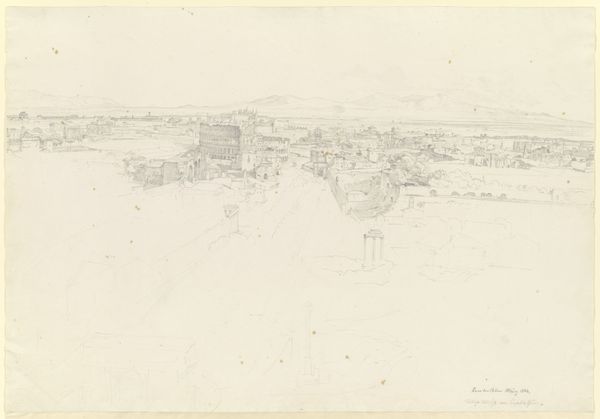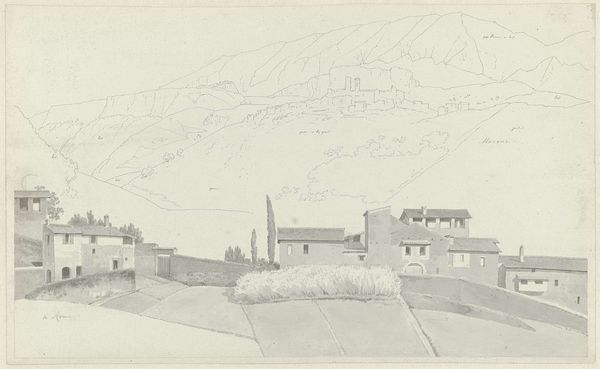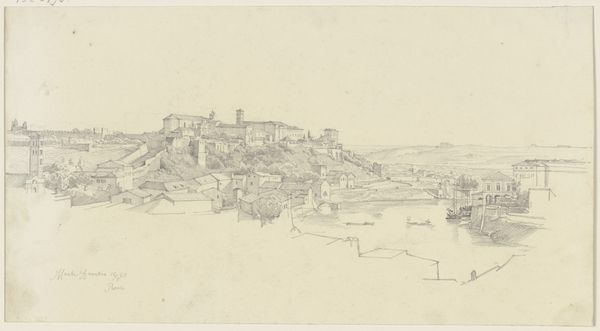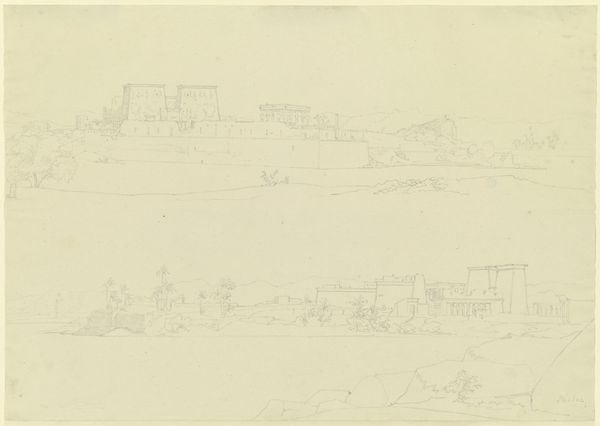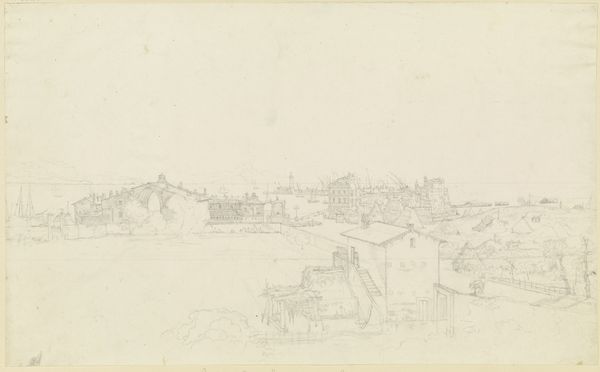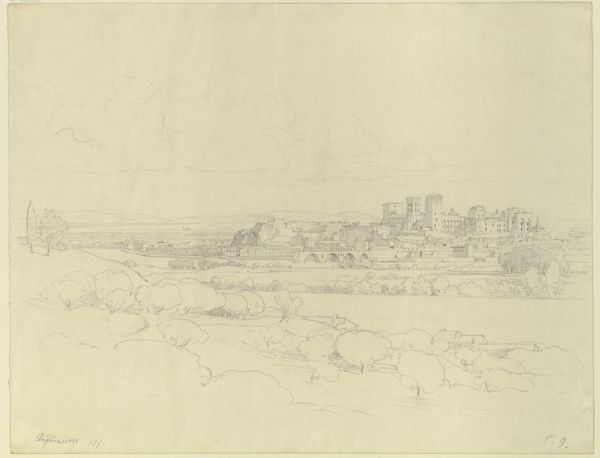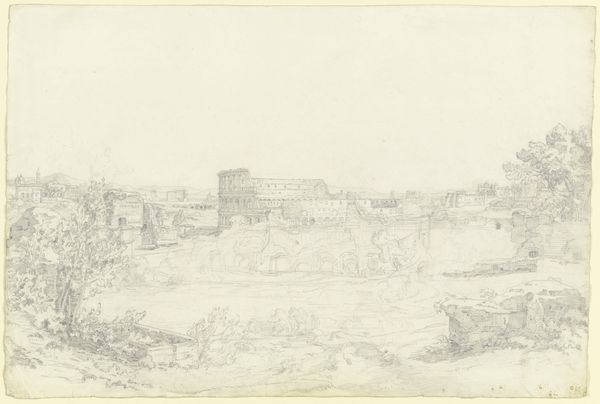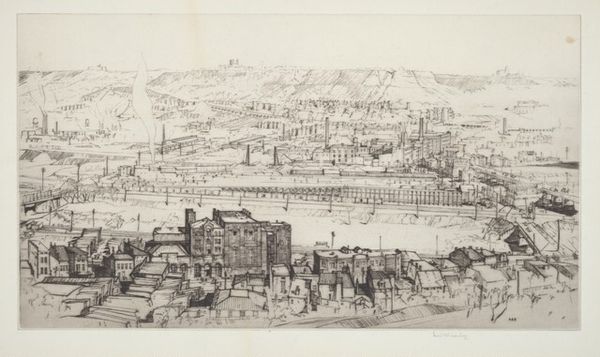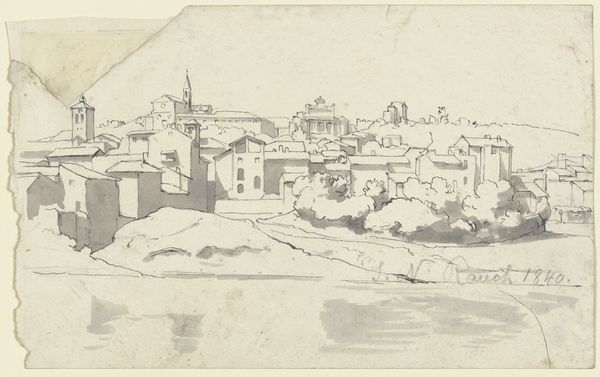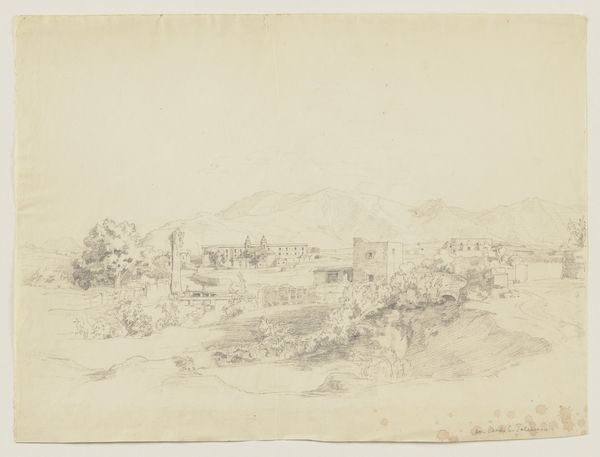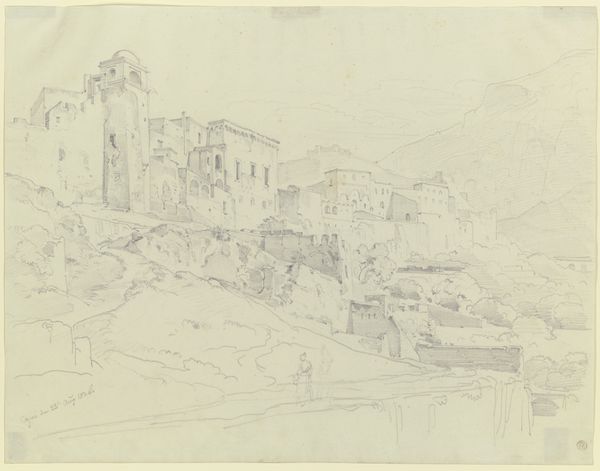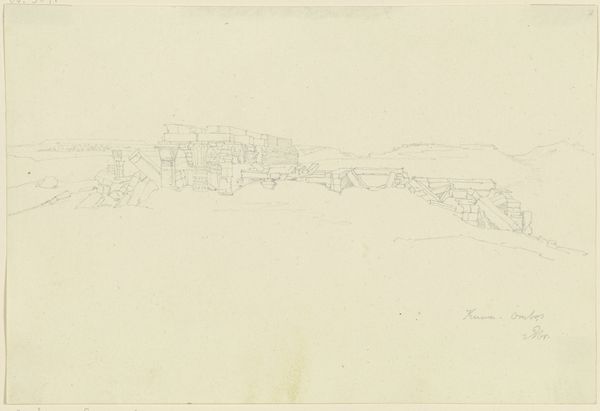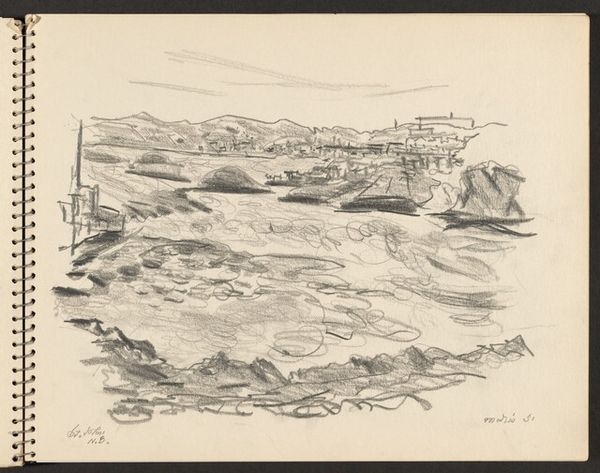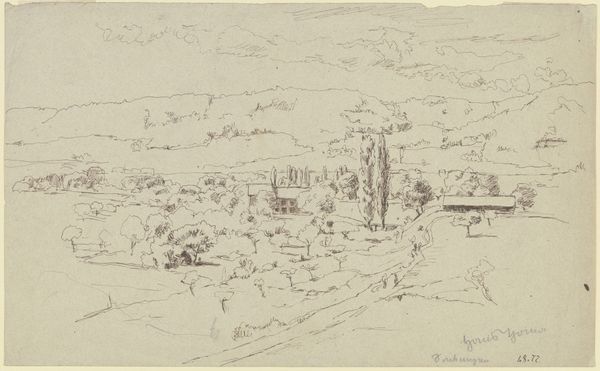
drawing, paper, ink, pencil
#
drawing
#
16_19th-century
#
pencil sketch
#
landscape
#
paper
#
personal sketchbook
#
ink
#
pencil
Copyright: Public Domain
Editor: This is "Pozzuoli," a drawing by Friedrich Eisenlohr. It seems to be made with pencil and ink on paper. It has a very understated, almost ghostly quality, given the muted tones. What stands out to you in this work? Curator: I see a fascinating record of artistic labor. Notice the visible pencil lines; Eisenlohr isn't trying to hide the process of creating this image. This connects it directly to the landscape itself, but more than that to the means of its production. It points toward a very specific experience that could be tied to other landscapes and even the burgeoning modes of transport. Is he just passing through, on the way to somewhere else, with the boat acting as both mode and suggestion? Is the paper itself of local manufacture or imported from the North? These questions and objects bring into view the complexities inherent to the act of observing, and drawing. Editor: That's a really interesting perspective. I was so focused on the architectural details and the scene itself, but you've shifted my attention to the physical creation and context. Curator: Precisely. Consider the social context; sketching was becoming a more accessible practice, aided by the rise of mass-produced art materials. These inexpensive materials meant artists did not require significant patronage, allowing them independence. Editor: So, this drawing becomes more than just a depiction of a place; it's an artifact connected to the changing conditions of artistic production itself. Curator: Indeed. The lack of strong chiaroscuro indicates a break from the "high art" landscape traditions to allow for, perhaps, the beginnings of documentary modes of practice. A flattening of place itself? How do we consider the politics of landscape in relationship to what looks like, ostensibly, a mere sketchbook drawing? Editor: I hadn't considered that at all. Now I'm wondering about Eisenlohr's place within the social and economic changes impacting artmaking at that time. Thank you. Curator: It's through this lens that these drawings can be best illuminated. Thank you as well.
Comments
No comments
Be the first to comment and join the conversation on the ultimate creative platform.
